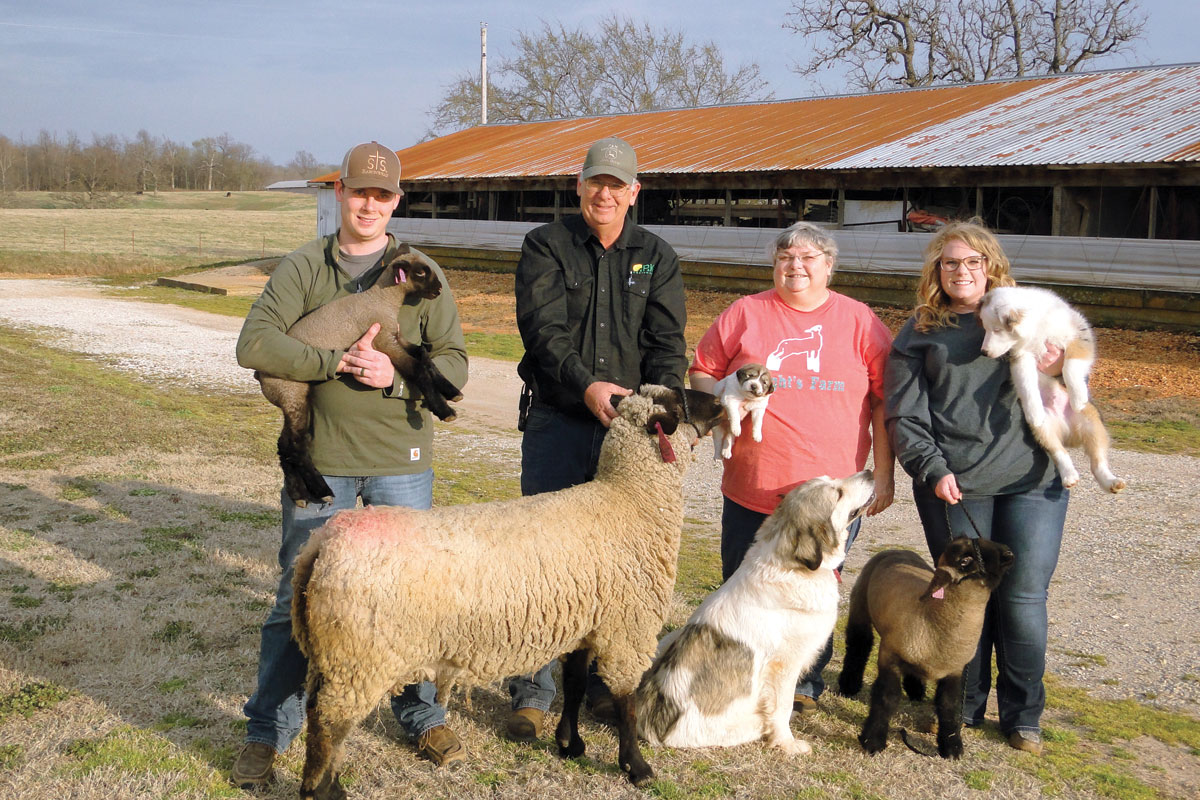
Sarah Bramall has a busy career as grant facilitator, as well as a growing family farm
While production agriculture, whether livestock or crops, is the obvious center of agriculture, it is not the only career available. Other choices include communications, marketing, public relations and education. Most people view ag ed as a teacher in a high school or college classroom with occasional hands-on experiences or internships. Sarah Bramall found something different and is now the project specialist for grant-driven outreach agricultural educational programs for small farmers, centered at the University of Arkansas. Included are nationwide partners, educational institutions and participants.
Sarah grew up on a small farm in Tontitown, Ark., and loved playing softball. Then in fifth grade she was exposed to show sheep through her friend Jacob Hudlow, and everything in her life changed. She traded her ball glove for a show lamb. Having shown livestock when they were young, parents Brad and Susie Wright eagerly encouraged and supported her. Next came 4-H, FFA and the addition of showing cattle.
“Ag took over my life. You don’t know what you are missing until you have it,” Sarah explained.
Sarah finished her bachelor’s in agricultural education and began a master’s at the University of Arkansas because she was not ready to make a career choice in the “real” world. She was also offered a position as a teaching and research assistant that paid her tuition. In the meantime, Dr. Dan Donoghue in the Poultry Department spoke to one of Sarah’s professors, Dr. Susan Watkins because he was seeking someone to facilitate his grant programs and needed someone education and communication-centered rather than research-centered.
“It all seemed like one of those God things,” Sarah said. “I met my now husband Justin, who nurtured my love of education, then this opportunity came my way, a position didn’t even exist when I began my master’s degree.”
Sarah facilitates two multi-year grant programs focused on sustainable agriculture. The first is in its third generation and is for beginning farmers and ranchers interested in small-scale farming with poultry, livestock, and/or agroforestry which includes pasturing livestock in trees, alley cropping in planted forests, riparian buffers and forest farming for nuts and berries. A third component is Armed to Farm Program which targets veterans and spouses who attend classes in addition to hands-on experience with local farmers such as building hoop houses and knowing when to move different species to new pastures depending upon the species and grass height.
The second program is based on a one-time grant intended to help small and medium sustainable-focused farms optimize their marketing opportunities. The program is in the middle of a five-year grant and has just completed an interactive workbook on how to use social media to supplement the more traditional sustainable marketing such as farmers markets, online sales and direct marketing to restaurants. The third component of this grant offers webinars and workshops on important business practices as they relate to agriculture. These include record-keeping and financial aspects of farming.
Like many women in agriculture today, Sarah’s ag life is diverse. She recently married Justin Bramall, the ag teacher in Greenland, Ark. They raise show sheep with her parents in order to provide affordable show lambs for area youth. Rather than owning a ram, the foursome prefers to own ewes, which they transport to other breeders in Oklahoma and South Dakota for breeding, whether by AI, ET or live cover. The sheep stay with the ram from July to October when they are brought back home.
“The breeders we work with are good friends we met through showing,” Sarah said. “They have excellent genetics that we and our customers deeply appreciate.
Biosceurity measures are a high priority used to promote herd health. In addition to keeping the barn as clean and sanitary as possible, visitors to the sheep area are often asked to wear booties to reduce the risk of transferring disease. The biggest herd health issues are foot rot, foot scald and wool fungus in the spring and fall when the rains are sometimes intense and the ground wet for extended periods. Another contributing factor is that their higher protein feed causes faster foot growth and more susceptibility to foot issues.
The couple is also beginning two cattle herds: one commercial and one registered. The commercial herd is made up of five Angus-influenced mommas with calves which stay with Justin’s parents, Gary and Paula, who live outside of West Fork. The couple also received a registered Angus cow/calf pair as a wedding present. The momma cow and her heifer calf are temporarily kept at Sarah’s parents’ acreage until Sarah and Justin finish adding new cross fencing on family farm land in Northwest Arkansas. The couple hopes to purchase a registered Angus bull who will service both seed herds.
Sarah believes most people are unaware of the breadth and depth of careers available in agriculture with a fit for everyone in agriculture regardless of degrees earned or potential career interests.
“I have always had strong women to look up to in this world, and they all come from farming/agriculture backgrounds. They include my mother, Susie, who has strengthened both our family and our sheep operation. Another is Candace Wilson who is a true agriculture ‘agvocate’ with stellar baking and home economics skills, as well as showing and digging in her garden,” Sarah said.
“The agriculture industry is full of shining examples of women. I am daily astounded that I get to be a small part of an industry that is cultivating generations who will continue to feed, clothe, shelter and educate the world.”






